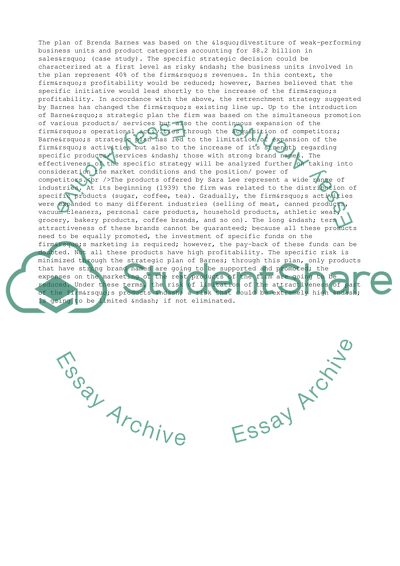Cite this document
(Strategic Management the Case of Sara Lee Corporation Study, n.d.)
Strategic Management the Case of Sara Lee Corporation Study. https://studentshare.org/management/1550385-strategic-management-case-analysis
Strategic Management the Case of Sara Lee Corporation Study. https://studentshare.org/management/1550385-strategic-management-case-analysis
(Strategic Management the Case of Sara Lee Corporation Study)
Strategic Management the Case of Sara Lee Corporation Study. https://studentshare.org/management/1550385-strategic-management-case-analysis.
Strategic Management the Case of Sara Lee Corporation Study. https://studentshare.org/management/1550385-strategic-management-case-analysis.
“Strategic Management the Case of Sara Lee Corporation Study”. https://studentshare.org/management/1550385-strategic-management-case-analysis.


